Somewhere under the Rainbow
|
NASHVILLE, Tn.–The joke about Nashville’s rapid growth is how the city skyline consists of tower cranes. Traffic is a major issue. Former Mayor Karl Dean was so concerned about the city’s outdated public transportation system he tried to take buses to work–but locals stopped to pick him up in their cars. Things in the rear view mirror are larger than they appear. “The preservation of historic landmarks in Nashville in crisis mode,” said Robbie Jones, past president and board member of Historic Nashville, Inc. told me in a January 2016 interview. “The city is growing so fast developers are tearing down historic buildings as quickly as they can and they’re replacing them with condos and office towers. We are under assault.” The recent reopening of the historic Skull’s Rainbow Room in the once seedy downtown Printer’s Alley is major cultural news that incorporates country music, murder, speakeasies, burlesque and a carnival worker. David “Skull” Schulman opened his nightclub in 1948 in Printer’s Alley, once the ribald shadow of Nashville’s publishing and printing businesses. The narrow two block jaunt stretches from Union Street to Church Street. Andy Griffith was a house comedian at Skull’s and the club featured exotic dancers in the Bible Belt hometown of Bettie Page. Printer’s Alley nightclubs populated the Bourbon Street- like strip and entertainers on the circuit included Waylon Jennings, Hank Williams and the Supremes. In 1963 Jimi Hendrix played with bassist Billy Cox at the Jolly Roger, next door to Skull’s. Schulman was born in North Nashville, several blocks from the since-razed Sulphur Dell ballpark. As a teenager he froze baseballs in the meat freezer at the nearby Swift & Company to deaden the rubber inside. He once was locked inside the freezer on the Fourth of July. Schulman was known as “The Mayor of Printer’s Alley” and later became a semi-cast member on the “Hee-Haw” television series. He liked to wear his faded blue “Hee-Haw” overalls behind his beloved bar. Skull also loved poodles. During Christmas Skull would dye his poodles red and green Elvis Presley once sent him a poodle and Skull insisted on naming every poodle “Sweetie” or “Sugar.” He was often seen walking his poodles on a rhinestone leash down Printer’s Alley. On Jan. 21, 1998 Schulman was murdered during a robbery inside the club. A cigarette vendor found Schulman lying on the floor. His latest “Sweetie” was wandering around the bar. Schulman’s throat had been slit and he had been hit over the head with a liquor bottle. He died the next day. He was 80 years old. The horrific murder shook the Nashville entertainment industry to its soul. Country singer Tanya Tucker rushed to Schulman’s bedside before he died. Skull’s friend Willie Nelson appeared on “America’s Most Wanted” in an effort to catch the killer (s). And in 2001, American drifters James Caveye and Jason Pence were charged of robbing and murdering Schulman. Pence was working a carnival at the Tennessee State Fair and Schulman once hired him for part-time help. Pence told police he knew Schulman carried large wads of money in the bib of his overalls. Caveye got a life sentence while Pence pleaded guilty to facilitating a murder, which carried a prison sentence between 15 and 25 years. Skull’s Rainbow Room closed several months after Schulman’s death. I was fortunate to have met Skull during visits in the late 1980s and 1990s. My friend Angelo Varias, former drummer with John Prine, took me there for the first time. We saw burlesque comedian Joey Gerard who had cut his chops in Calumet City, Ill. strip clubs. A few years later I adjourned to Skull’s after the Country Music Association (CMA) awards and had a couple beers with a young Shooter Jennings. I only spoke with Skull a little bit. He loved baseball and worked as a batboy for the Nashville Vols minor league team. I later learned that Vol players gave him the nickname “Skull” after he suffered a fractured skull in an automobile accident. On May 24, 1935 Skull flipped the switch for major league baseball’s first night game at Crosley Field with Cincinnati Reds General Manager Larry MacPhail. MacPhail had operated a department store in downtown Nashville. Country saxophone player Boots Randolph ran a club down the alley from Skull’s. Before my time, country-jazz guitarist Hank Garland (Elvis Presley, Patsy Cline) was the headliner at the nearby Carousel Club. All those joints have since closed. Printer’s Alley became old news. Lower Broadway Avenue is just a few blocks away from Printer’s Alley and that nightlife strip with honky tonks like Tootsie’s and Robert’s Western World was reborn after the 1996 opening of the Bridgestone Arena, home of the NHL’s Nashville Predators. Even most locals thought Printer’s Alley was extinct—until June of 2015 when Skull’s Rainbow Room quietly reopened. The 140-seat club is all dressed up and retains none of the funky aspects of the original place, which included mildewed carpet on the walls. The restaurant and bar features heartfelt homage to Schulman. Two of his classic Manuel western jackets and one Nudie jacket are framed and hang on a wall over a dining area. The small black and white television set where Schulman liked to watch wrestling matches is in a nearby case. The original checkerboard stage is still in use, and yes, tasteful burlesque dancers still perform twice nightly. Executive Chef and business partner Gannon M. Leary trained at Commander’s Palace in New Orleans and his lobster bisque is the best in the region. The new ownership group is led by David Wileman, a 40-year-old native of Manchester, England. One of his four partners is Vincent Polizzi, a former bodyguard for Brazilian soccer legend Pele’. “Glory days and bad times in Printer’s Alley,” Wileman said during a recent lunchtime interview at Skull’s. “And David ‘Skull’ Schulman was there all the way through it. He was here rain or shine. It was his life. He never married. He had a sister who auctioned off all the music memorabalia and we actually bought some of the stuff back. “The club had been empty for 16 years when we got it. It had flooded, it had been on fire. The only thing missing was a plaque of locust. The damage was almost Biblical. But certain things were ridiculous like the original stage. And learning who all played here. Willie Nelson was part of the house band. Elvis, Johnny Cash and Bob Dylan all played on that stage. Paul McCartney wrote songs here when he moved to Nashville (in 1974 to record his “Junior’s Farm” album) He took a shine to a girl who was on stage and that was ‘Sally G..” “Sally G” was the flip side to the Paul McCartney and Wings hit single “Junior’s Farm.” The country-tinged ballad featured Nashville session players Vassar Clements and Johnny Gimble. Wileman said, “Linda McCartney got pissed and he had to change the name. It was originally ‘Diane G.’ Johnny Cash was a good friend of Skull’s. “When they were filming “The Johnny Cash” television show, Johnny would bring down whoever had been on the show. One night Johnny Cash, Willie Nelson, Bob Dylan and Joni Mitchell were all on that little stage.” Michael McCall, Museum Museum Writer/Editor of the Country Music Hall of Fame verified the fact that Dylan and Mitchell were guests on Cash’s premiere show. The series began on June 7, 1969 as a summer replacement show. It was taped at the Ryman Auditorium, just a few blocks from Skull’s. Hosted by Buck Owens and Roy Clark, “Hee-Haw” was a country version of the popular “Laugh-In” comedy series and Schulman liked to create his own version of the show in his club. “Skull had dancers, comedians, singers and bands,” Wileman said. “He’d be on the show from time to time popping up in the cornfields. He wore the Nudie and Manuel Jackets with the rhinestones. We have two sets of his ‘Hee-Haw’ overalls. He was famous for wearing elaborate outfits. I tried them on. They’re horrible.” Country Music Hall of Famer Charlie McCoy was musical director of “Hee-Haw” between 1969 and 1987. The new Skull’s honors McCoy with a vintage poster promoting a live appearance from McCoy with Monument Recording artist Laney Smallwood. McCoy has not been to the new spot, but he gave the lay of the land of the original place. “It was the 1960s,” he said. “The Rainbow Room was upstairs. That was the strip club. We played downstairs at the Black Poodle. We became friends with Skull because he hung out on the ‘Hee-Haw’ set. Skull was a character. He was on Printer’s Alley a very long time. He had live country music and there was no country music in the alley.” After Skull’s Rainbow Room closed, the next door Bourbon Street Blues & Boogie Bar rented the space for storage. That plan stopped after employees refused to go in the 3,000-square foot vacant club because they saw an eerie shape that resembled Schulman. Nashville ghost tours now stop at the club. “The walls are nearly two feet thick,” Wileman explained. “Solid stone. When we were doing renovations there was no air conditioning, no heat in here. Pretty much what the temperature was outside is what the temperature was inside. ” There were nights when it was 80, 90 degrees outside and the temperature would plummet in here. It was very strange.” Wileman’s partner Phil Martin has taken over Bourbon Street Blues & Boogie, across the street from the New Orleans influenced Printer’s Alley Lofts. Each of the nine high-ceiling lofts can be rented by the day or the week.
Skull’s Rainbow Room is actually in the basement of the Southern Turf Building, constructed in 1895. The building is on the National Register of Historic Places and Historic Nashville Inc. owns a preservation easement on the building. Skull’s had to work with the non-profit group to restore the space with integrity. “We consider Skull’s a success story,” Jones said. “They’ve done it the right way. In 1982 (Nashville attorney) Bob Tuke invented the first preservation easement program in Tennessee. He has his offices in that building, so that building is protected. We’re so excited about this positive development we’re holding our annual meeting January 28 at Skull’s. The city historian is going to speak.” Schulman would be speechless. The original turf building included a bordello on the third and fourth floors and the office of The Tennessean newspaper faced 4th Street on the opposite side of Printer’s Alley. The alley is actually subterranean at the bottom of a steep hill. “This area was big during Prohibition,” Wileman said. “There was a famous bar upstairs called The Southern Turf Saloon. This was the gentleman’s quarter, a place where the ‘nice ladies’ never came. Skull’s had been a casino. There’s bootlegging tunnels underneath here and catacombs that go down to the Cumberland (River). The club that Boots Randolph had, there’s an actual entranceway into the tunnel system. The Underground Railroad ran around here.” Printer’s Alley thrived in part, because cocktails didn’t become legal in Nashville until 1967. Turkish baths and funky pawn shops were part of the Printer’s Alley landscape during the early 20th Century. McCoy laughed and said, “In the mid-1960s we played at the Captain’s Table, downstairs in the alley. I was in a band I had with Kenny Buttrey and Mac Gayden (Nashville session players). It was the funniest thing, at that time liquor by the drink was illegal in Nashville. And four blocks from the state capital they’re selling booze down there it was going out of style. Someone got paid off.” Wileman said, “Printer’s Alley didn’t really close down during Prohibition. High-end politicians drank down here. It was off the radar. But in the last few years the word got out Printer’s Alley was closed. It’s kind of bizarre. They’re rebuilding the Utopia Hotel, a famous hotel at the corner of Printer’s Alley. A couple bars and restaurants are closed while they are doing renovations. It looks kind of decrepit leading up to Printer’s Alley.” The six-story Utopia, 206 Cherry St., has a stone facade that was designed by the same architect who worked on the Ryman Auditorium, the mother church of country music. The Utopia was a hangout for horse racing fans and in the late 1800s was known as the “resort of the sporting classes.” Jones added, “We need to balance redevelopment with the preservation of historic landmarks that make Nashville unique, the very qualities of the city that make people want to come and visit and work here. We can’t lose our character as we grow. We’ve already lost a lot of buildings on Music Row. Recording studios and publishing houses. As a result of all the demolitions, in January (2015) Music Row was designated as a National Treasure by the National Trust for Historic Preservation.” Historic Nashville, Inc. maintains an annual “Nashville Nine” of the nine most endangered properties in Nashville. The properties are nominated by the community. The Colonel Tom Parker House, 1215 South in Madison is on the 2015 list. Elvis Presley’s manager lived in this home from 1908 until 1986. Keeping historic burlesque was a no-brainer for the new Skull’s ownership. Rotating pianists play supper club era music on a black Baldwin Baby Grand during dinner time. Evanston native and former Musician magazine editor (1995-98) Bob Doerschuck is part of the piano rotation. “It ties in nice with the whole place,” Wileman said. “We lean more towards jazz although there is a country music influence at times. We wanted to do something different than Lower Broadway. We wanted to roll back the years, a speakeasy, jazz-burlesque. Even the menu reflects that. We got our hands on some of the menus from the old alley restaurants and we did a twist on that. Prime rib. Escargot.” I loved the crawfish tomato risotto with gorgonzola cheese and Aborio rice ($13). Kitana Louise is a regular Skull’s dancer who moved to Nashville in 2005. She left her native Houston, Tx. to be a country singer. In 2012 Louise began studying burlesque under Freya West, the Headmistress of Nashville’s only burlesque finishing school. West learned her craft under the legendary Michelle L’amour at Studio L’amour in Chicago. Louise met Skull’s partner Phil Martin at a 2013 private singer-dancer gig for Prince’s horn player. Martin told all five showgirls at the party that Skull’s was going to reopen. “It’s an amazing thing to be part of this movement of empowering women to own their sexual experience and have fun with it,” Louise explained. “Bringing Skull’s Rainbow Room back has definitely helped solidify the burlesque presence again in Nashville. Printer’s Alley was always intriguing to me. When you walk down the alley there’s a big mural with the picture of a showgirl. This is Bettie Page’s hometown, this is Music City. “Live dancing belongs here.” Louise has seen all kinds of reactions as she dances to Big Band and classic blues on stage and atop a runway adjacent to the dining area. The runway pays homage to the original Skull’s, where strippers danced on tables. I’ve had people walk out,” Louise said. “People say things that I would consider inappropriate. They don’t know. A lot of people don’t know whether they should clap, if they should holler. The tipping thing is interesting as well. ‘Do I put a tip in her bra?’ ‘Do I put a tip in her underwear?’ Do I throw some money on the stage?'” Tips for Skull’s show girls are accepted in a large glass jar. Louise explained, “It’s different than a strip club experience. It’s different than a drag queen experience. Here you are in a club that serves escargot and foie gras, and there’s a person taking off their clothes. How do you socially behave?” Wileman said, “The burlesque show is a very mild, fun show. It’s a throwback to that whole Sally Rand era with girls and the feather downs. It’s tasteful.” * * * * David Wileman left England for America to play soccer at Hofstra University in New York. His aunts and cousins ran bars and restaurants around England and he grew up in the hospitality environment. Wileman’s historic eye was developed in part by managing The Beekman Pub, established in 1936 near Wall Street. Wileman’s American born wife works for the federal government and was transferred to Nashville in 2010. Wileman said, “I’ve been a big fan of preservation and restoration. I salvaged what I could do. We redid the drains, the electric, the plumbing then brought a lot of pieces back in and tried to put the puzzle back together. It took us 18 months to redo it. There was water damage behind the stage. I took the back of the stage off and found the original food menu, five feet by eight feet. It was actually patching a hole behind the wall. Why go buy good wood when you can use that? “We brought back the (25 seat) bar. The basic layout of the room is very similar to what it was. The location of the stage is in the same place. About two weeks before we opened this lady walks in with a box. She was a bartender at Skull’s for 27 years. She gave us all these photographs. Skull lined the walls with pictures of everyone who had been through here: Sammy Davis, Jr., Paul McCartney, Elvis (Presley).” “We had a party for Tim McGraw. He got his break in here. Apparently Tim McGraw was ready to throw in the towel and Skull gave him some money and told him to ‘stick around.’ He brought some record guys to come see him and the rest is history. Skull touched people on all levels from the top to the bottom. People still talk about him and it was nearly 20 years ago this place closed. “This guy was obviously something very very special.” (c) Dave Hoekstra, January 2016
|

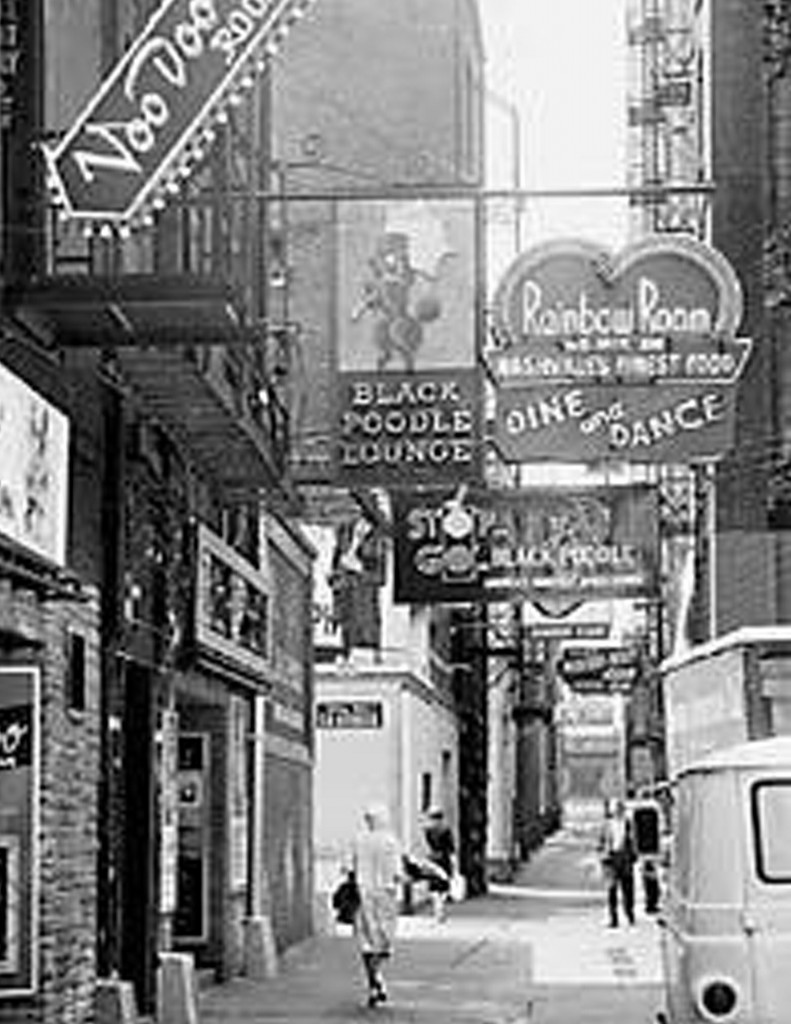
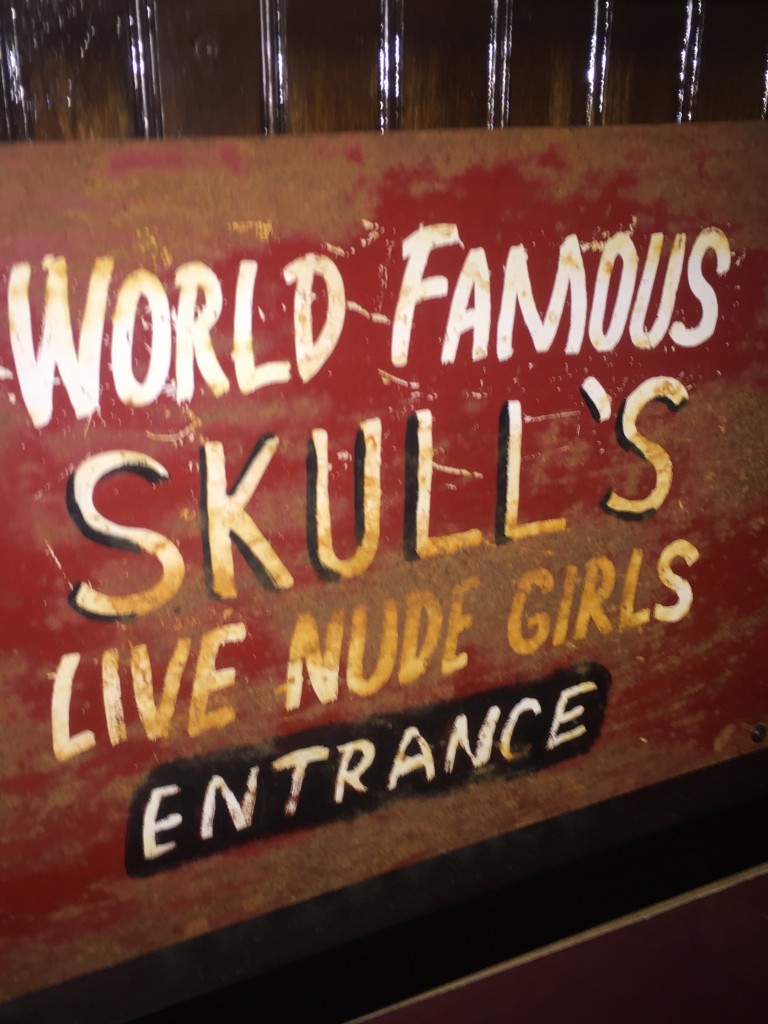
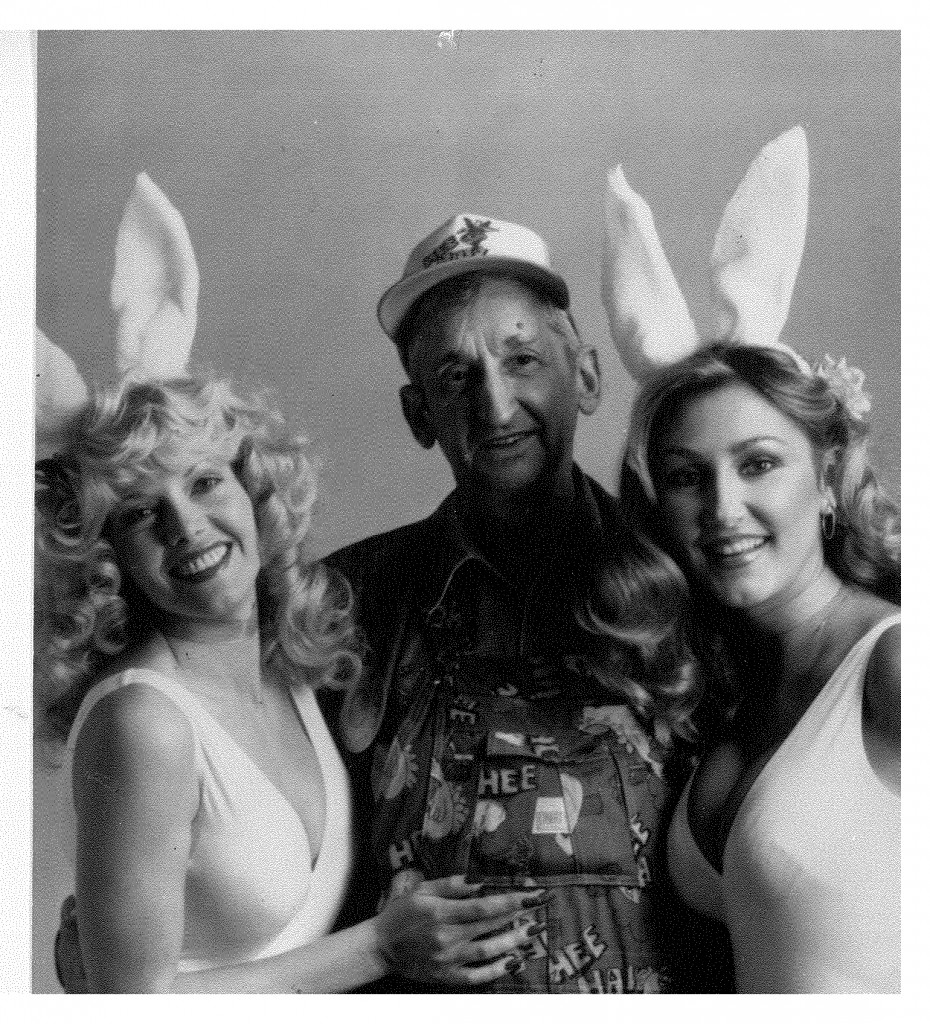
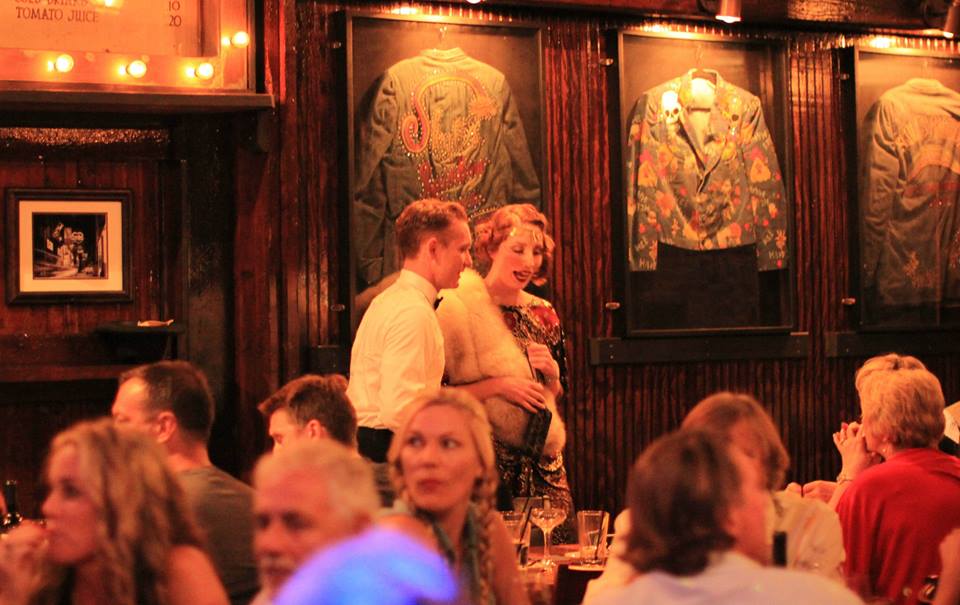
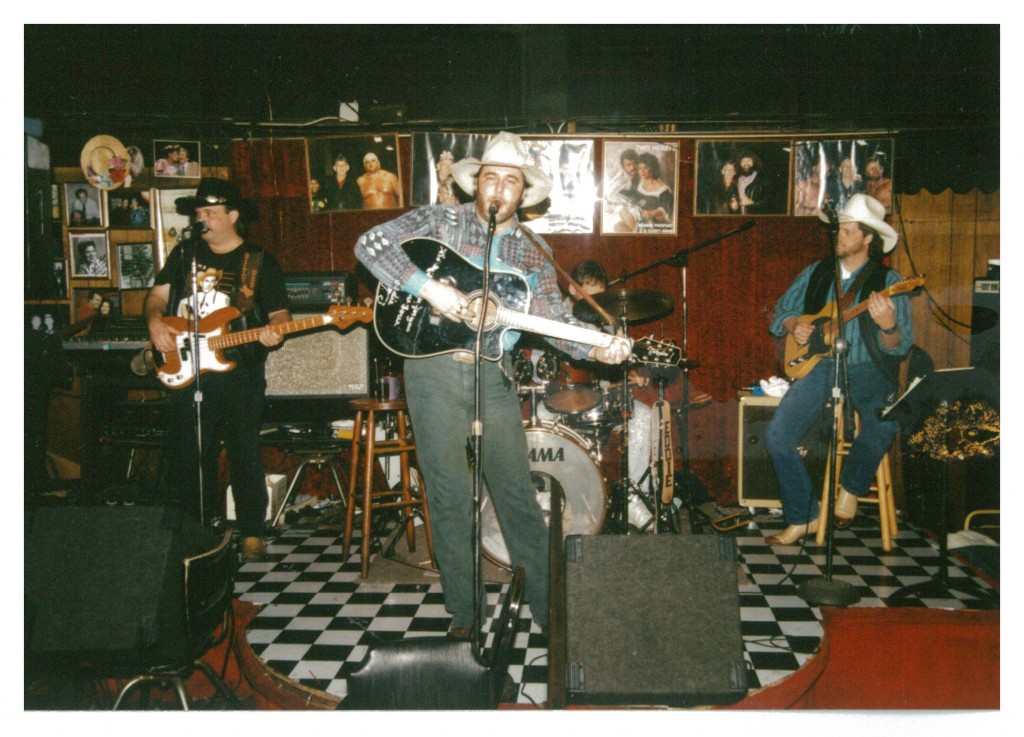
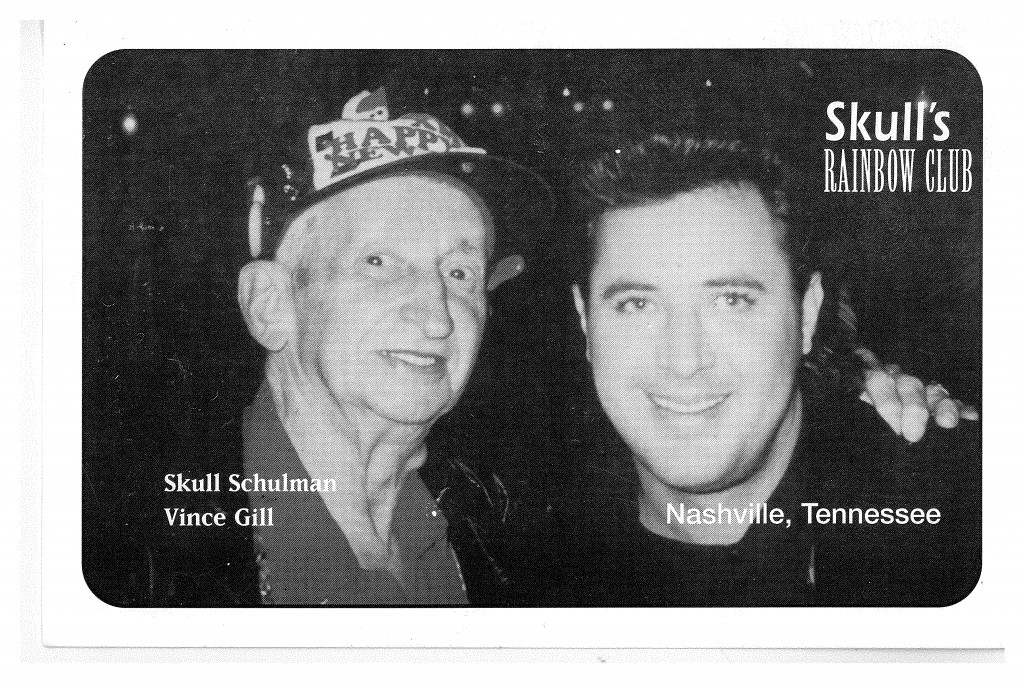

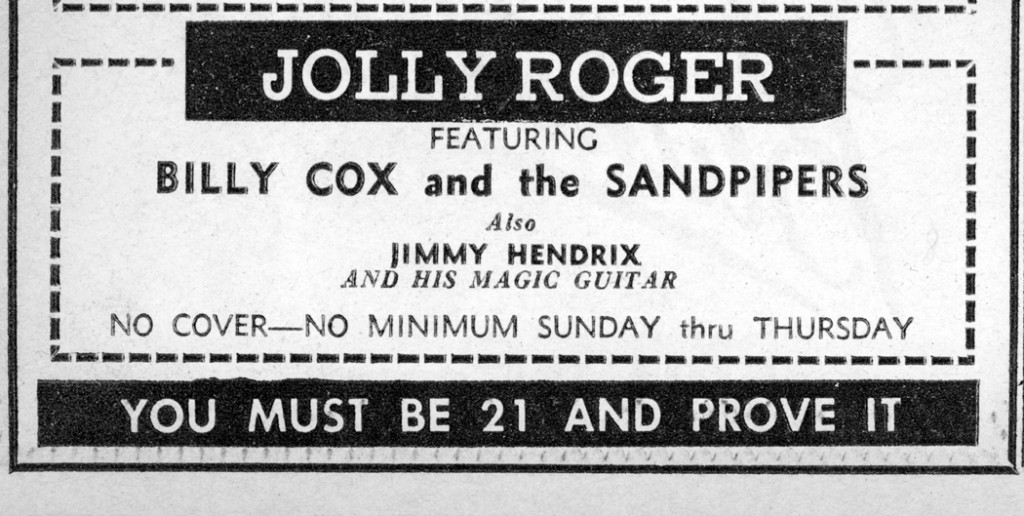
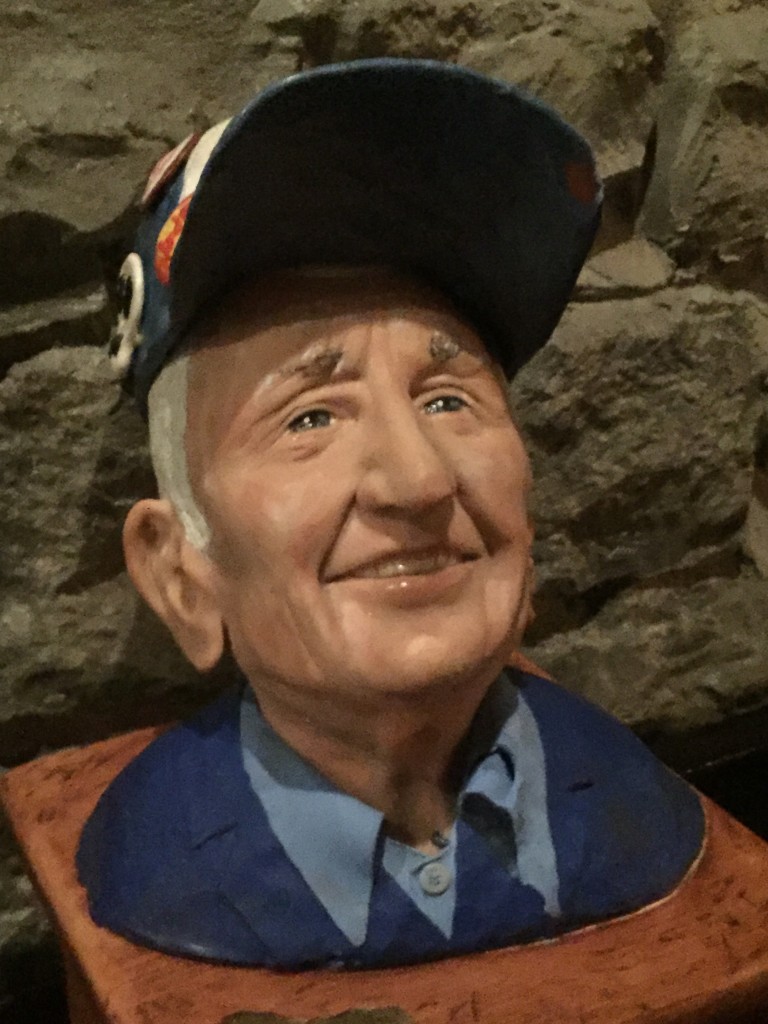
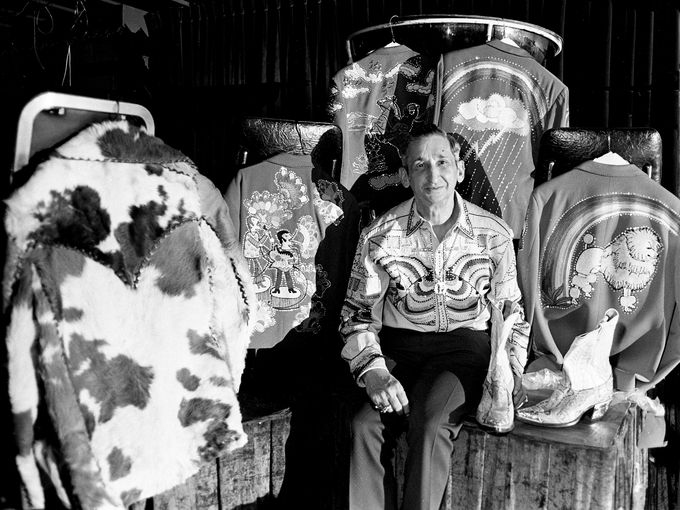
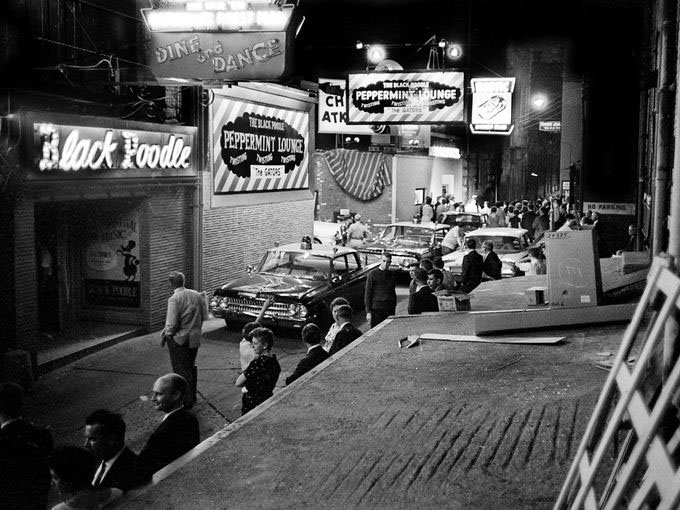
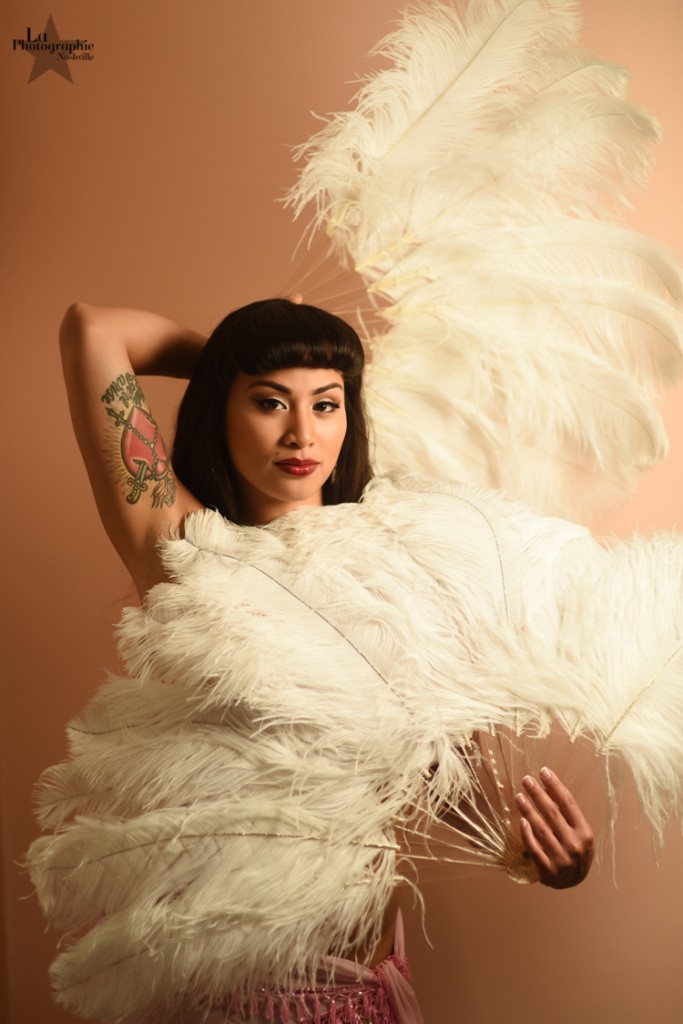
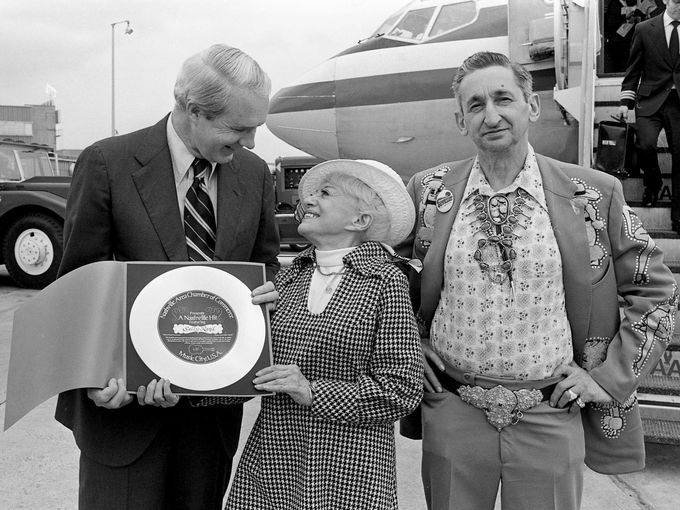

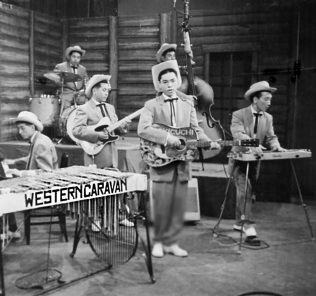

Hi Dave,
Great story. I visited Skull’s Rainbow Room on my first trip to Nashville about 25 years ago and moved here six months later from NYC. David has done an amazing job on the place – it is absolutely gorgeous. Next time you come by the Alley, stop in at Fleet Street Pub – which has been operating in the Alley for the past four years and draws a very loyal local crowd as well. It’s been wonderful to see the Alley become a destination spot for Nashvillians, and as a downtown resident, I love that it’s a place where I can meet my neighbors.